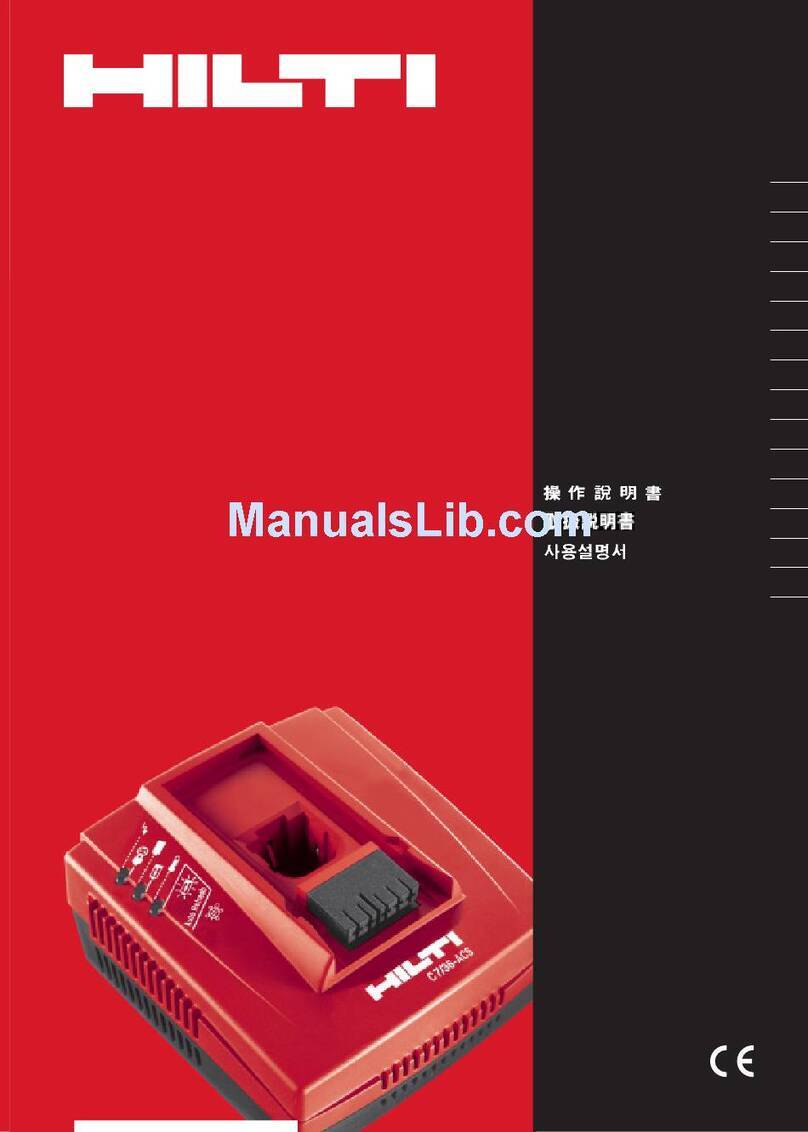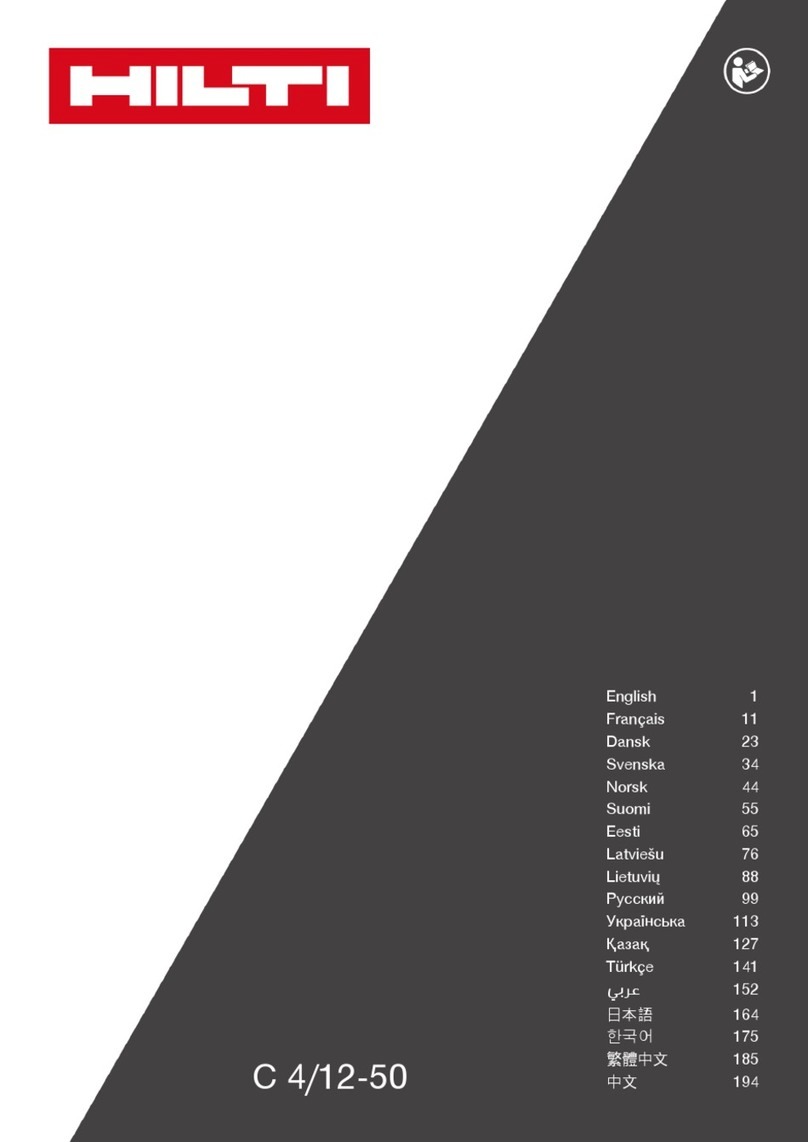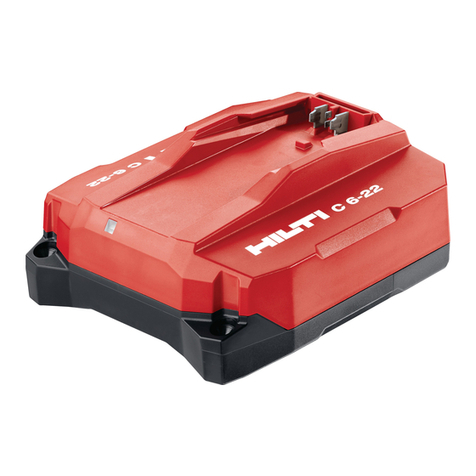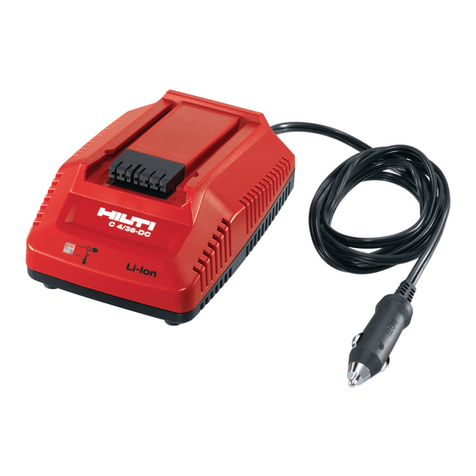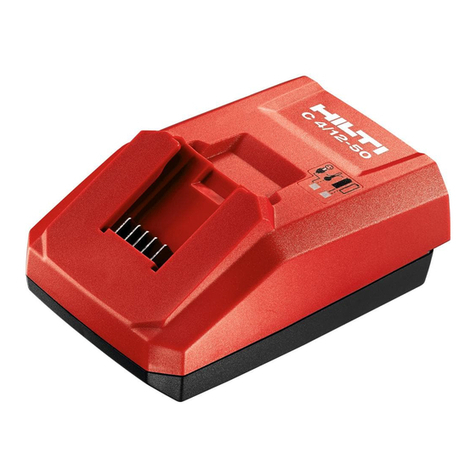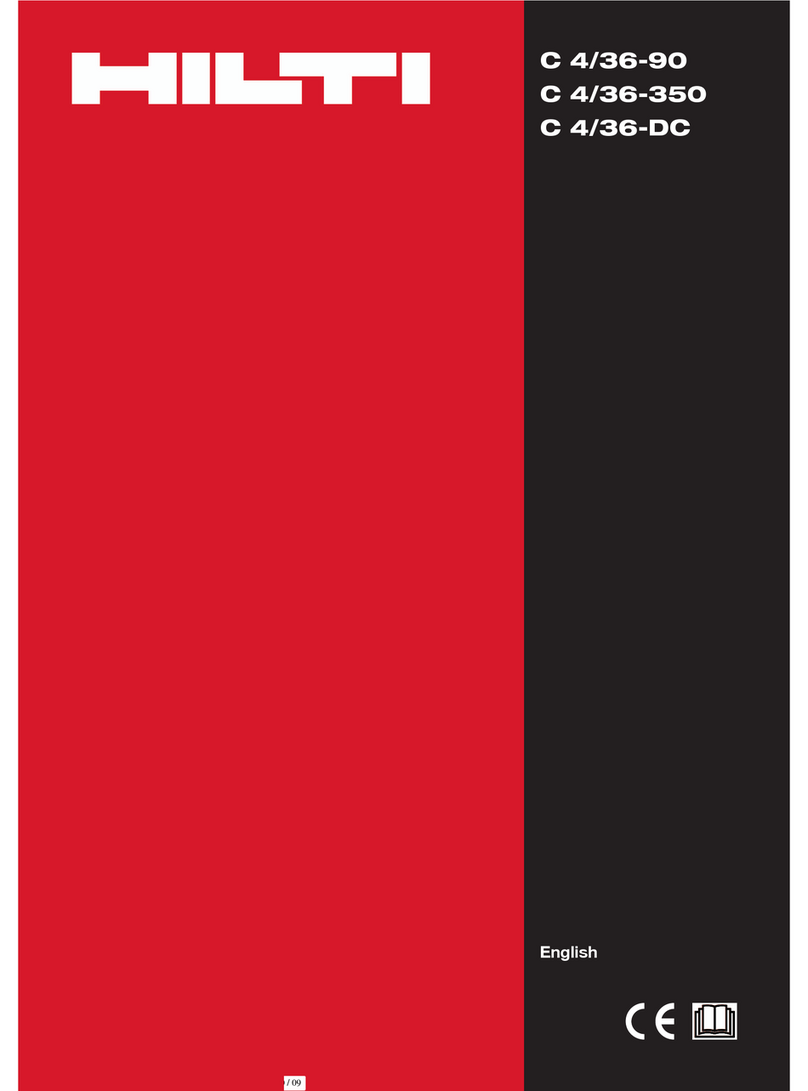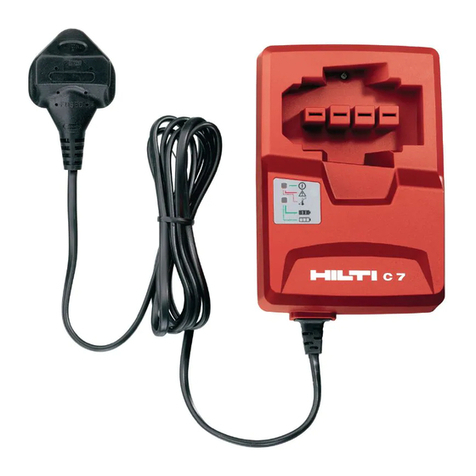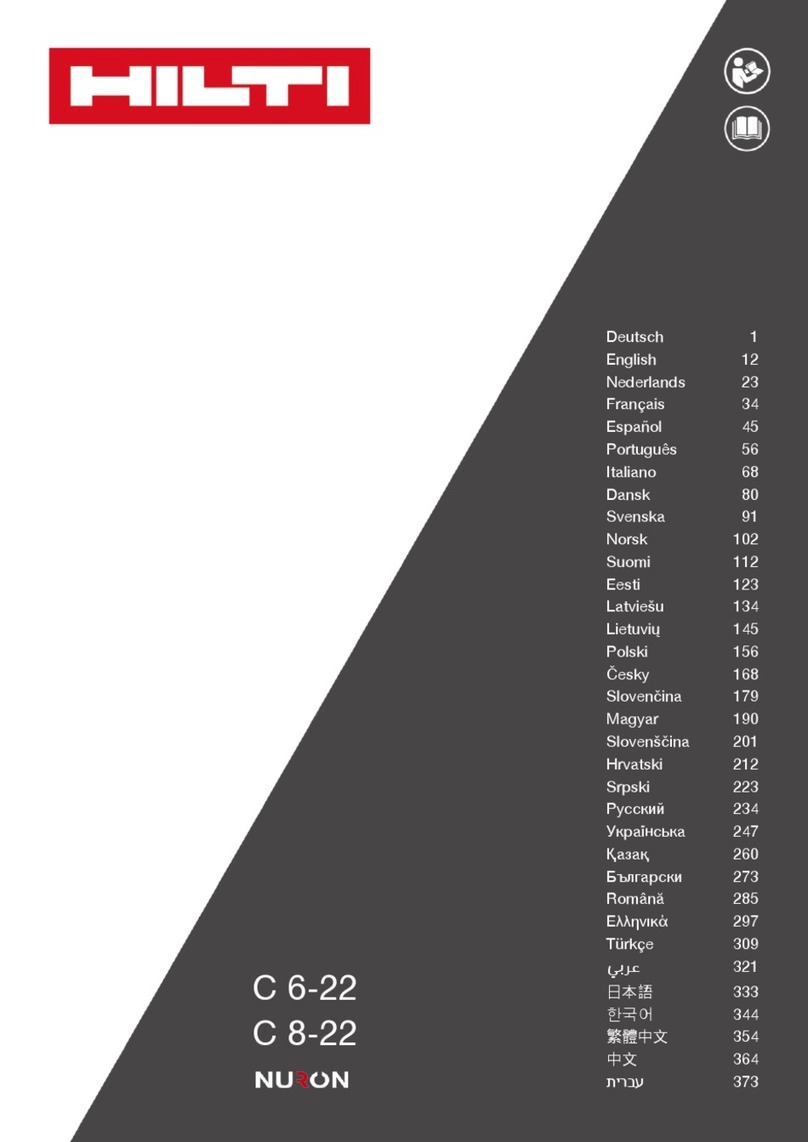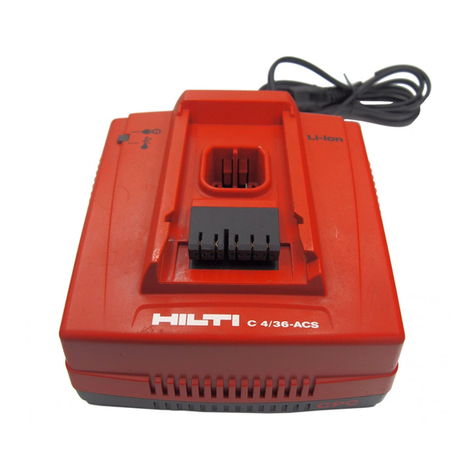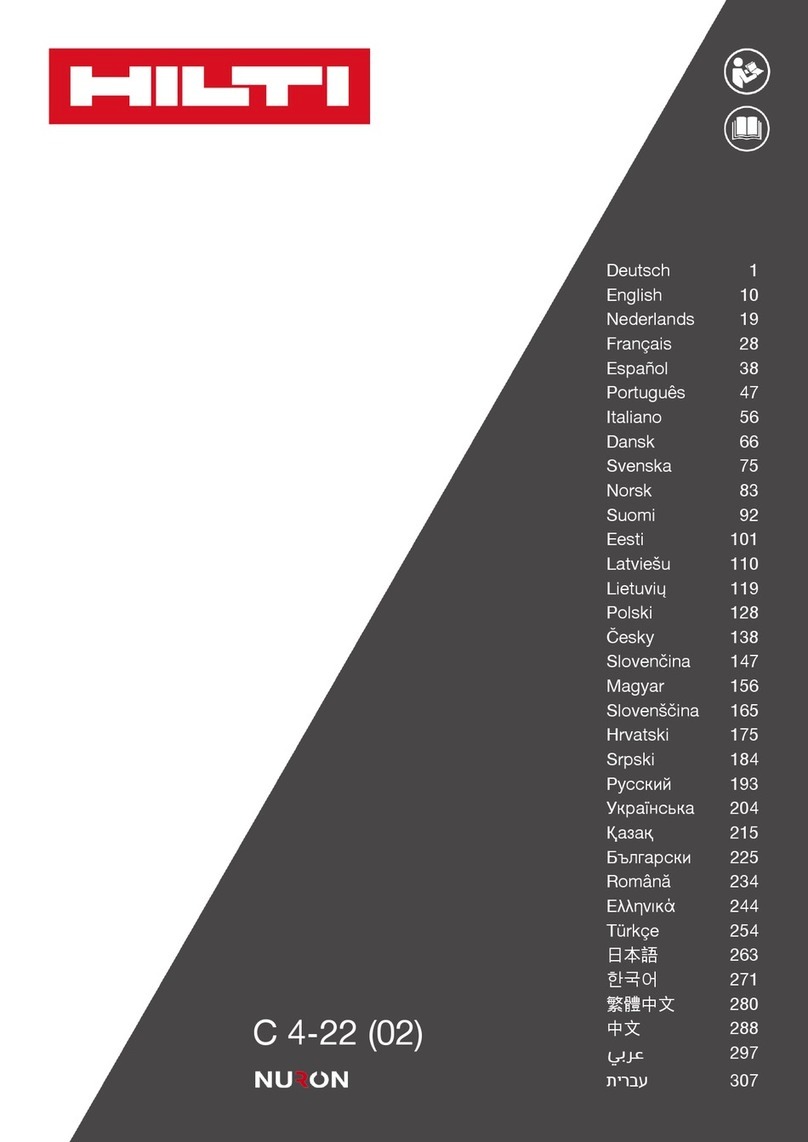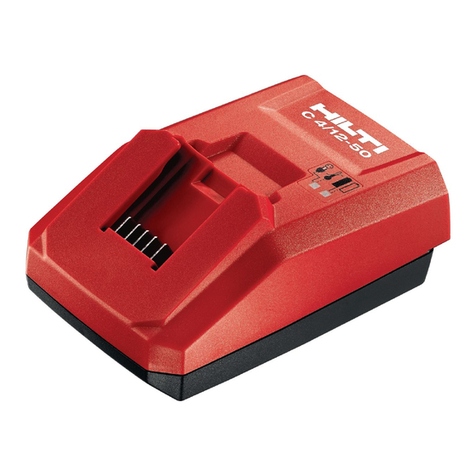
5.2 Battery use and care
NOTE
Battery performance drops at low temperat-
ures. Never use the battery until the cells be-
come fully discharged. Change to the second
battery in good time. Recharge the battery im-
mediately so that it is ready for reuse.
Store the battery in a cool, dry place. Never
storethebatterywhereitisexposedtothe
heat of the sun, on a radiator, behind a motor
vehicle windscreen or at a window. Batteries
that have reached the end of their life must
be disposed of safely and correctly to avoid
environmental pollution.
5.3 Switching the appliance on
Plug the supply cord into the power outlet.
NOTE
ThegreenLEDlightsaftertheappliancehas
been plugged in. If the green LED doesn’t light
or goes out during operation, unplug the supply
cord from the power outlet and then plug it
in again. If the green LED still doesn’t light
after reconnecting it several times, return the
appliance to Hilti Service for repair.
6 Operation
6.1 Inserting and charging the
battery 23
CAUTION
This appliance is designed for use with the
specified Hilti batteries. Charging other batter-
ies is not permissible. A risk of personal injury
or fire and irreparable damage to the battery
and charger may otherwise result. A caustic
liquid may leak from defective batteries. Avoid
contact with this liquid.
NOTE
Before inserting the battery, check that the
contacts are clean and free from grease.
Depending on the type of Hilti battery, push or
slide the battery into the interface provided.
Check that the battery and charger interfaces
match (keyed fit).
Charging begins automatically after insertion of
the battery in the charger.
NOTE
- Charging does not begin automatically when
the yellow TPS battery indicator lamp blinks
(only on C 4/36‑ACS TPS charger). Check
that the battery interface matches the char-
ger interface (both interfaces are keyed to
prevent insertion of incompatible types).
- The battery will suffer no damage even when
left in the charger for long periods. In this
case, however, it is necessary that the char-
ger is operating (green LED on the char-
germustbelit).Afterthebatteryhasbeen
charged, it receives a regular trickle charge
over a period of 48 hours in order to en-
sure that full battery capacity is maintained.
The battery charge status LED goes out after
48 hours, even although the battery is fully
charged. For safety reasons, it is recom-
mended that the battery is removed from
the charger after completion of the charging
cycle.
6.2 Care of the Li-ion battery
Avoid entrance of moisture.
Charge the battery fully before using it for the
first time.
In order to achieve maximum battery life, stop
discharging the battery as soon as a significant
drop in performance is noticed.
NOTE
If use of the appliance continues, further battery
discharge will be stopped automatically before
the battery cells suffer damage.
Charge the battery with the Hilti charger ap-
proved for use with Li-ion batteries.
NOTE
- A conditioning charge (as is required with
NiCd or NiMH batteries) is not necessary.
- Interruption of the charging procedure has no
negative effect on battery life.
- Charging can be started at any time with
no negative effect battery life. There is no
memory effect (as with NiCd or NiMH batter-
ies).
en
17
Printed: 08.07.2013 | Doc-Nr: PUB / 5129884 / 000 / 01
